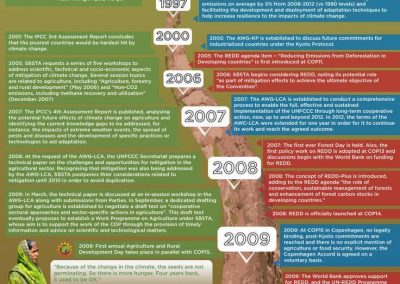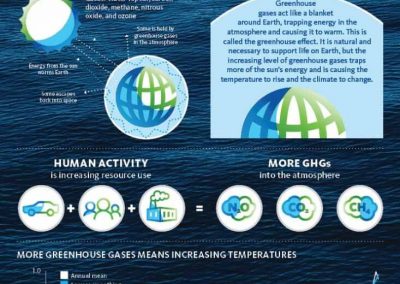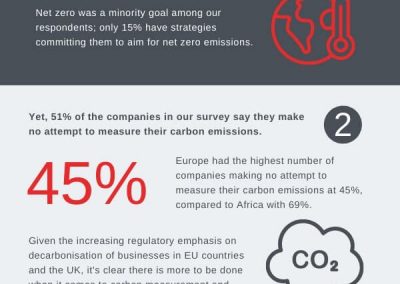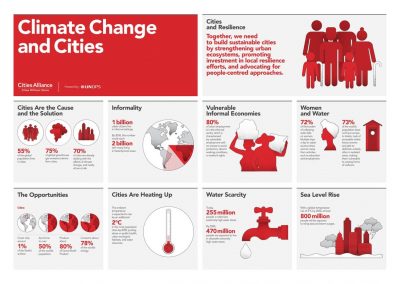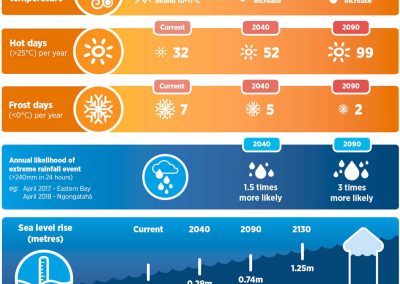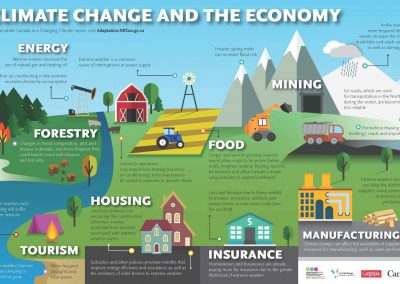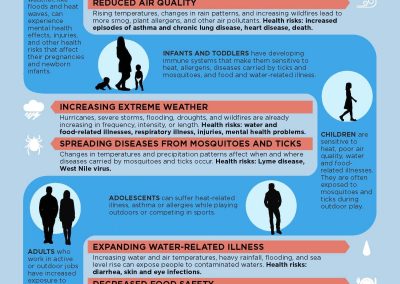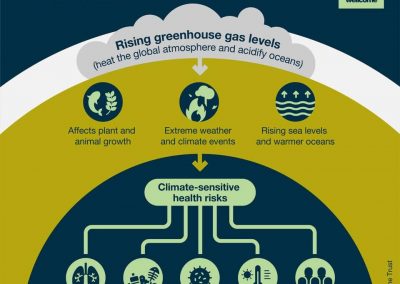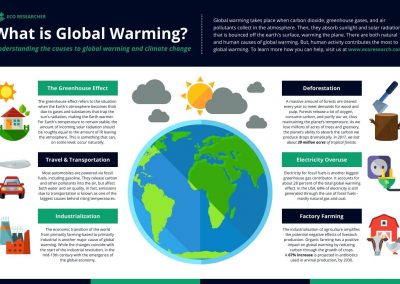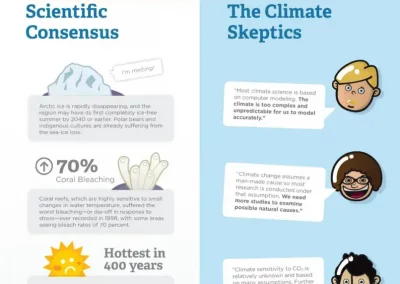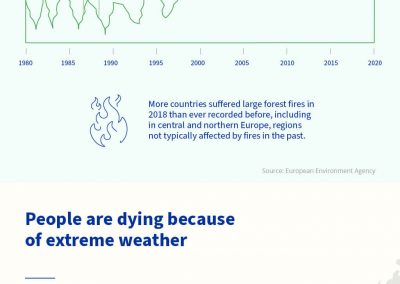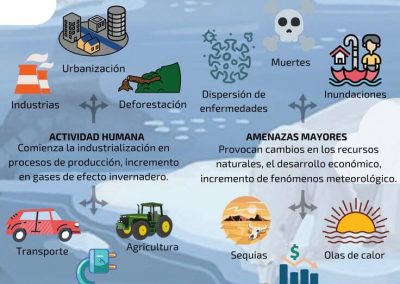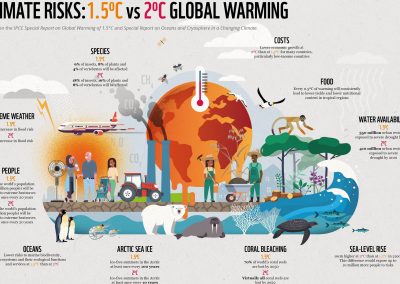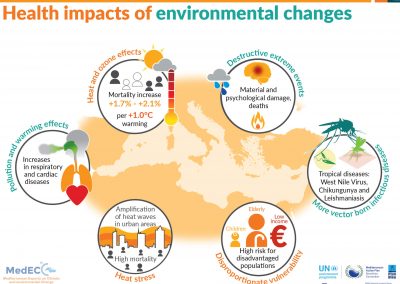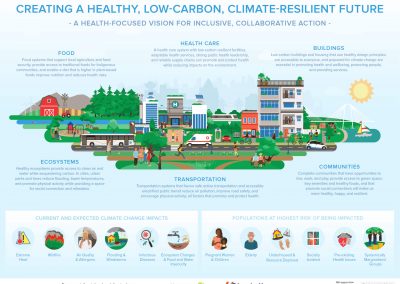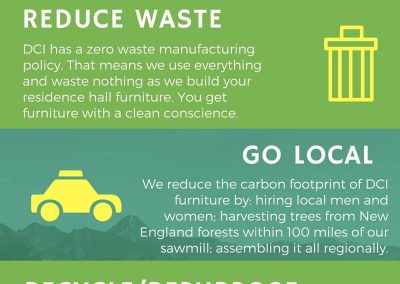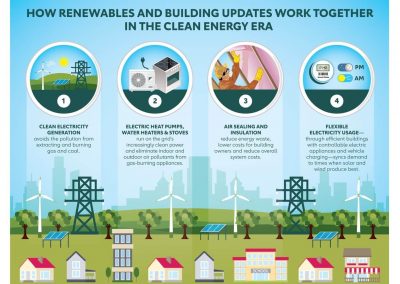1. World & Climate Strategies
The issue of climate change refers to a long-term shift in temperatures and weather patterns, but in recent years, the effects have become more pronounced. We are now experiencing more frequent and intense droughts, storms, heat waves, rising sea levels, melting glaciers, and warming oceans. The consequences of these changes are profound, as we are indirectly harming animals, destroying their habitats, and wreaking havoc on people’s livelihoods and communities.
Despite many attempts to address this issue, we continue to struggle to find effective solutions. It is clear that profound and lasting solutions of this magnitude require sustained and long-term national strategies. However, we must take stronger action now to prevent further, more profound and long-lasting damage from climate change.
One of the most important steps we can take is to make our communities more environmentally friendly. We must be more conservative with our energy usage and make every effort to recycle as much as possible. The urgency of this matter demands that we take action sooner rather than later, and make conscious choices every day to reduce our impact on the environment.

Selected Infographics
Click on any image to enlarge.
At the bottom of the description under each image, you may “click to source location”.
General Information
The Story of Agriculture and Climate Change
Farmers in both developing and developed countries will be affected by the impacts of climate change and we must support them to adapt, while meeting growing demand for food and helping tackle the cause of climate change. (Click to source location.) (by CGIAR and CCAFS)
Climate Change 101
The ongoing changes to our climate are largely caused by human activity (increasing resource use), causing global temperatures to rise, oceans to warm, ice caps to melt, sea levels to rise, increased rainfall, etc. (Click to source location.) (by Fonterra, Dairy for life, src: NASA/GISS)
Climate action or climate distraction?
51% of the companies make no attempt to measure their carbon emissions; among those who do montir their carbon, 54% record emissions in-house on spreadsheets, the other 19% relies on third-party software, and 26% have them independently audited. (Click to source location.) (by Achilles)
Climate Change and Cities
Together, we need to build sustainable cities by strengthening urban ecosystems, promoting investment in local resilience efforts, and advocating for people-centered approaches. (Click to source location.) (by Cities Alliance)
Effects of Climate Change
Sea levels will rise by 0.19 meters by 2040, then 0.46 meters by 2090, and another 0.51 meters by 2130. By 2040, extreme rainfall events will be 1.5 more likely, and by 2090, 3 times more likely. There will be an increase in air temperature and hot days, and a decrease in frost days. (Click to source location.) (by Bay of Plenty Regional Council Toi Moana)
Climate Change Facts
Average sea level is expected to rise 1 to 6 feet before the end of this century. This current pace of global average temperature rise puts approximately half of all plants and animals at risk of extinction. (Click to source location.) (src: National Wildlife Federation)
Climate Change and the Economy
In Canada, loss and damage due to heavy rainfall, hurricanes, tornadoes, wildlifes and winter storms is now more costly than fire and theft. (Click to source location.) (src: Ingenium, Natural Resources Canada, and Canadian Geographic)
Health
How will climate change affect my health
Climate change will bring many health risks: due to rising temperatures, dehydration, heat stroke, and worsened heart and lung disease; and due to reduced air quality, increased episodes of asthma and chronic lung disease, and heart disease. (Click to source location.) (by U.S. Global Change Research Program)
How does climate change affect health?
Rising greenhouse gas levels heat the global atmosphere and acidify oceans, affecting plants and animal growth, and promoting extreme weather, climate events, rising sea levels, and warmer oceans. (Click to source location.) (by wellcome, src: Wellcome Trust)
What is Global Warming?
Global warming takes place when carbon dioxide, greenhouse gases, and air pollutants collect in the atmosphere. Then, they absorb sunlight and solar radiation that is bounced off the earth’s surface, warming the plane. (Click to source location.) (by Eco Researcher in Venngage)
Global Warming?
Or a global-sized myth? According to 2,500 scientists from 130 countries, humans have caused all or most of the current planetary warming: arctic ice is rapidly disappearing, coral reefs have suffered the worst bleaching ever recorded in 1998, and the rate of warming is increasing, being the 20th century’s last two decades the hottest in 400 years. (Click to source location.) (created by oBizMedia.com, designed by Shawn Murdock)
Problems
Climate change costs lives and money
Across Europe since 1980, forest fires have burned more than 190.000 square kilometers, which is equal to double the size of Portugal; and the intensity of the rainfall over the 50 years in the Mediterranean region has increased over 22%. (Click to source location.) (by Council of the European Union, General Secretariat, src: European Environment Agency)
Main Threats of Climate change (Spanish)
Due to the burning of fossil fuels, electricity overuse, travel and transportation, factory farming, among other factors, there has been an increase in droughts, and heat waves, as well as economic losses, deaths, spread of diseases, and floods. (Click to source location.) (designed by Lizbeth Lopez in Canva)
Climate risks: 1.5°C vs 2°C global warming
Millions if not billions of people will be exposed to extreme heat waves at least once every 20 years. This will make an increase in flood risk, more exposure to severe drought, ice-free summers in the Arctic more frequent, higher risks to marine biodiversity, etcetera. (Click to source location.) (by World Wildlife Fund (WWF))
Health impacts of environmental changes
Pollution has caused increases in respiratory and cardiac diseases (heat stress): amplification of heat waves in urban areas; disproportionate vulnerability, high risk for disadvantaged populations; and destructive extreme events, material and psychological damage, and death. (Click to source location.) (by MedECC)
Solutions
Creating a Healthy, Low-Carbon, Climate-Resilient Future
There are six areas where we can make a change for a better vision: food systems higher in plant-based foods; a health care system with low-carbon resilient facilities; low carbon buildings; healthy ecosystems with access to clean air and water; transportation systems with accessible electrified public transit; and complete communities with access to green space. (Click to source location.) (by Vancouver Coastal Health and fraserhealth)
How to Help Prevent Climate Change with DCI Green Furniture
DCI has a zero waste manufacturing policy, and so we can use wood since it is a renewable resource, hire local men to reduce its carbon footprint, recycle and repurpose, and be calm that it will decompose naturally and nourish the soil. (Click to source location.) (by dcifurn.com)
How renewable and building updates work together in the clean energy era
Clean electricity generation avoids the pollution from extracting and burning gas and coal. (Click to source location.) (by NRDC)
Because you are fighting climate change, you care about protecting nature
Protecting and restoring nature to at least 50% of Earth’s land and seas is the fastest, most effective action we can take right now to halt the climate emergency. (Click to source location.) (by wild.org, Survival Revolution, reference: IUCN)
Reference
Information sources
|
The following services base their opinions in reliable information: [ Mundo.Spain(r) ] – traffic # 830 [ ABC.Spain(site) ] – traffic # 1220 [ GreatBritain(site) ] – traffic # 70 [ Canada(r) **] – traffic # 1,120 [ France(r) ] – traffic # 39,700 [ U.S.Consulates(r) ] – traffic # 2,700 [ New York Times (r) ] – traffic # 80 [ CNN(r) ] – traffic # 70 |
[ Fox(site) ] – traffic # 220 [ CDC.USA(r) ] – traffic # 300 [ World Economic Forum(r) ] – traffic # 3,400 [ Healthline(r) ] – traffic # 250 [ WebMD(r) ] – traffic # 530 [ Mayo Clinic(r) ] – traffic # 870 [ Science/Research(r) ] – traffic # 125 [ MedicalScience(r) ] – traffic # 630
|


